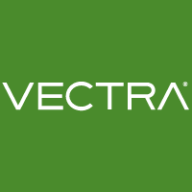

Find out in this report how the two Identity Threat Detection and Response (ITDR) solutions compare in terms of features, pricing, service and support, easy of deployment, and ROI.
| Product | Market Share (%) |
|---|---|
| Vectra AI | 2.2% |
| NetMon | 0.1% |
| Other | 97.7% |


| Company Size | Count |
|---|---|
| Small Business | 2 |
| Midsize Enterprise | 2 |
| Large Enterprise | 6 |
| Company Size | Count |
|---|---|
| Small Business | 9 |
| Midsize Enterprise | 10 |
| Large Enterprise | 27 |
NetMon offers significant capabilities in log aggregation, traffic analysis, and real-time network insights. Its ease of use accommodates both entry-level and advanced functionalities, enhancing network visibility and threat detection.
NetMon provides seamless analytics with its real-time dashboards and advanced AI integration. The platform is designed for comprehensive monitoring and detailed analysis, making it indispensable for identifying network traffic, origins, destinations, and facilitating threat detection through lateral traffic visibility. Despite its powerful analytics and customization features, improvements in product integration, customer support, and pricing could increase its competitive edge. Connectivity, topology visualization, and server performance are areas noted for enhancement. Integration with protocols like Gflow and Netflow might alleviate agent-based restriction challenges. NetMon sends correlated data to LogRhythm SIEM for enhanced threat analysis and is used for tasks like traffic analysis and DPA.
What are NetMon's key features?NetMon is widely adopted in industries requiring detailed traffic monitoring and security, such as finance and healthcare. Its capabilities in traffic type identification and correlated analysis make it essential for environments where detecting irregular patterns is critical. It's utilized for network security through comprehensive analysis and integration with SIEM systems.
Vectra AI enhances security operations by pinpointing attack locations, correlating alerts, and providing in-depth visibility across attack lifecycles, ultimately prioritizing threats and improving incident responses.
Vectra AI integrates AI and machine learning to detect anomalies early and supports proactive threat response. Its features like risk scoring, alert correlation, and streamlined SOC efficiency are supplemented by integration with tools like Office 365. Users highlight integration, reporting, and customization challenges, alongside limitations in syslog data and false positive management. They seek enhancements in visualization, UI, TCP replay, endpoint visibility, and tool orchestration, with requests for improved documentation, licensing, and cloud processing innovation.
What are the key features of Vectra AI?In industries like finance, healthcare, and critical infrastructure, Vectra AI is crucial for threat detection and network monitoring. Entities use it for identifying anomalous behaviors and enhancing cybersecurity by responding to network activities and analyzing traffic for potential breaches. It operates on-premises and in hybrid cloud settings, enabling threat detection without endpoint agents and supporting compliance and policy enforcement.
We monitor all Identity Threat Detection and Response (ITDR) reviews to prevent fraudulent reviews and keep review quality high. We do not post reviews by company employees or direct competitors. We validate each review for authenticity via cross-reference with LinkedIn, and personal follow-up with the reviewer when necessary.